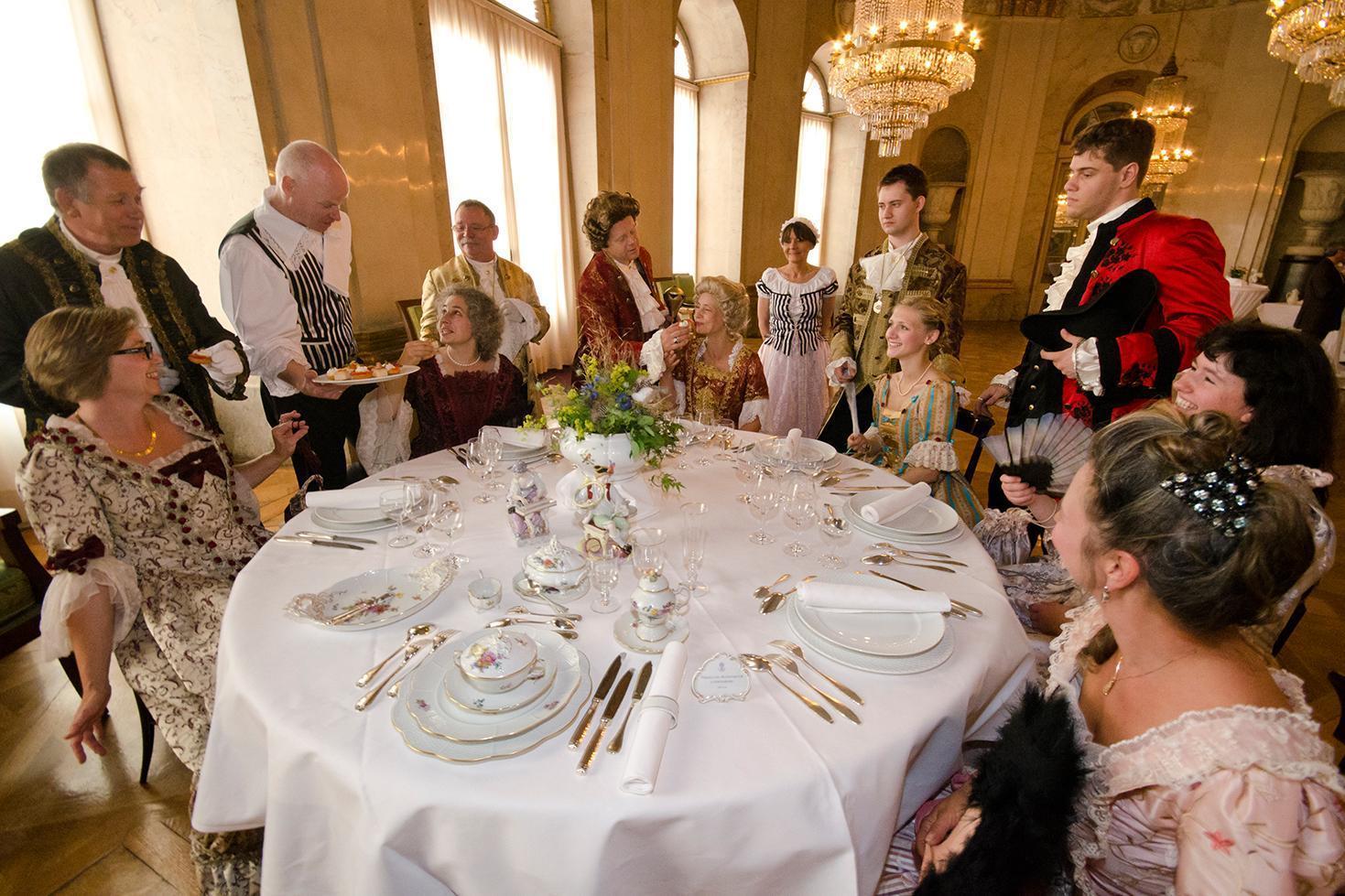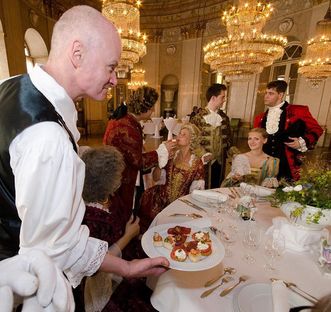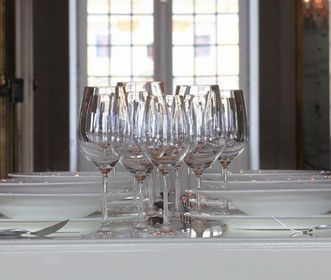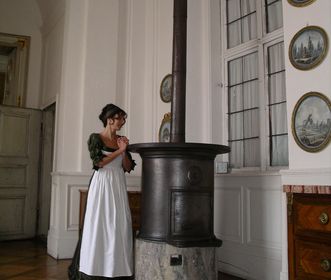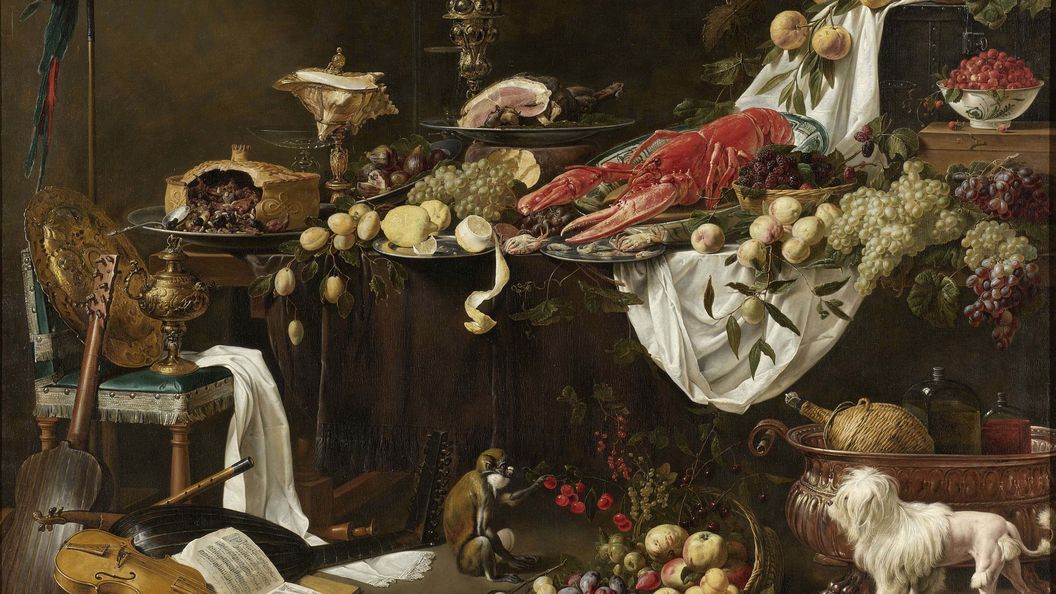Serving "à la française"
In the 17th and 18th centuries, nobility dined "à la française." This included many different dishes, served at the same time and arranged according to a set table layout and a holistic Baroque composition. The first course included pate, soups or pickled items. The main course consisted of large roasts, vegetable dishes and sweet dishes. Dessert was fruit, cheese and sweets. Perfumed toothpicks, stems of fennel and mint confections freshened breath after the meal.



